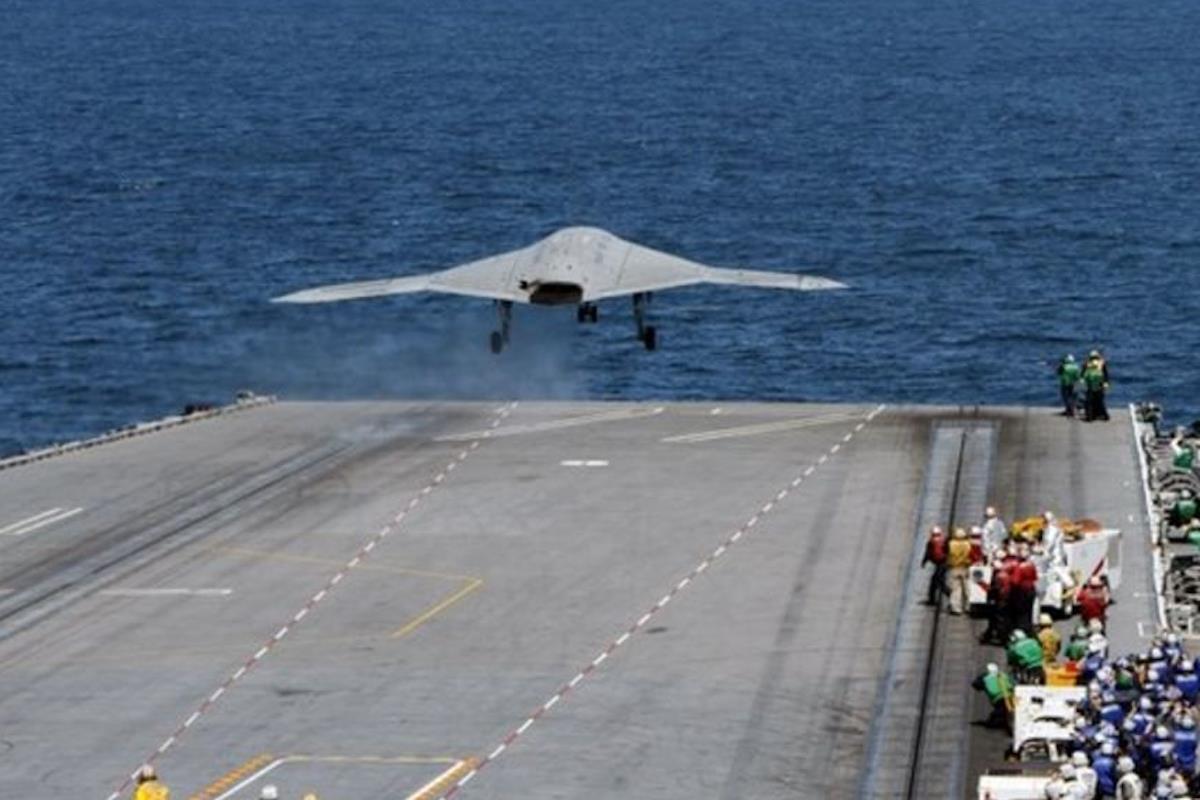
US Full Steam Ahead With Drone-Based Carrier Warfare
This month, The War Zone reported that the USS George H W Bush (CVN-77), a US Navy Nimitz class supercarrier, has recently been equipped with a dedicated Unmanned Air Warfare Center (UAWC), marking it as the first of its kind to integrate such a facility.
The War Zone report says that the UAWC is the operational hub for advanced uncrewed aircraft, including the MQ-25 Stingray tanker drones and future Collaborative Combat Aircraft (CCA).
It notes that this development is part of the US Navy's broader plan to incorporate UAWCs across all Nimitz and Ford-class carriers. The report says that the UAWC features the Unmanned Carrier Aviation Mission Control System (UMCS) MD-5E Ground Control Station (GCS), developed by the US Navy in collaboration with Lockheed Martin's Skunk Works.
The War Zone notes that the GCS is designed to support the MQ-25's primary mission of extending the carrier air wing's reach while reducing reliance on F/A-18E/F Super Hornet fighters for refueling tasks.
The report mentions that, despite delays and cost overruns since Boeing's 2018 Carrier-Based Aerial-Refueling System (CBARS) program win, the US Navy aims for a 2026 initial operational capability with plans to acquire 76 MQ-25 drones.
It says that the USS George H W Bush is set to commence at-sea testing of the UAWC's operational networks early next year, building upon initial tests conducted on the USS Abraham Lincoln (CVN-72).
Integrating unmanned aerial systems (UAS) on carriers like the USS George H W Bush highlights the increasing need for advanced aerial refueling capabilities, particularly for the Indo-Pacific's vast distances and amid the region's evolving threats.
In February 2023, Asia Times noted that the huge distances in the Indo-Pacific make aerial refueling capabilities crucial. Geographic distance challenges can diminish the advantages of a stronger military over a weaker opponent fighting on its home turf.

Legal Disclaimer:
MENAFN provides the information “as is” without warranty of any kind. We do not accept any responsibility or liability for the accuracy, content, images, videos, licenses, completeness, legality, or reliability of the information contained in this article. If you have any complaints or copyright issues related to this article, kindly contact the provider above.


























Comments
No comment